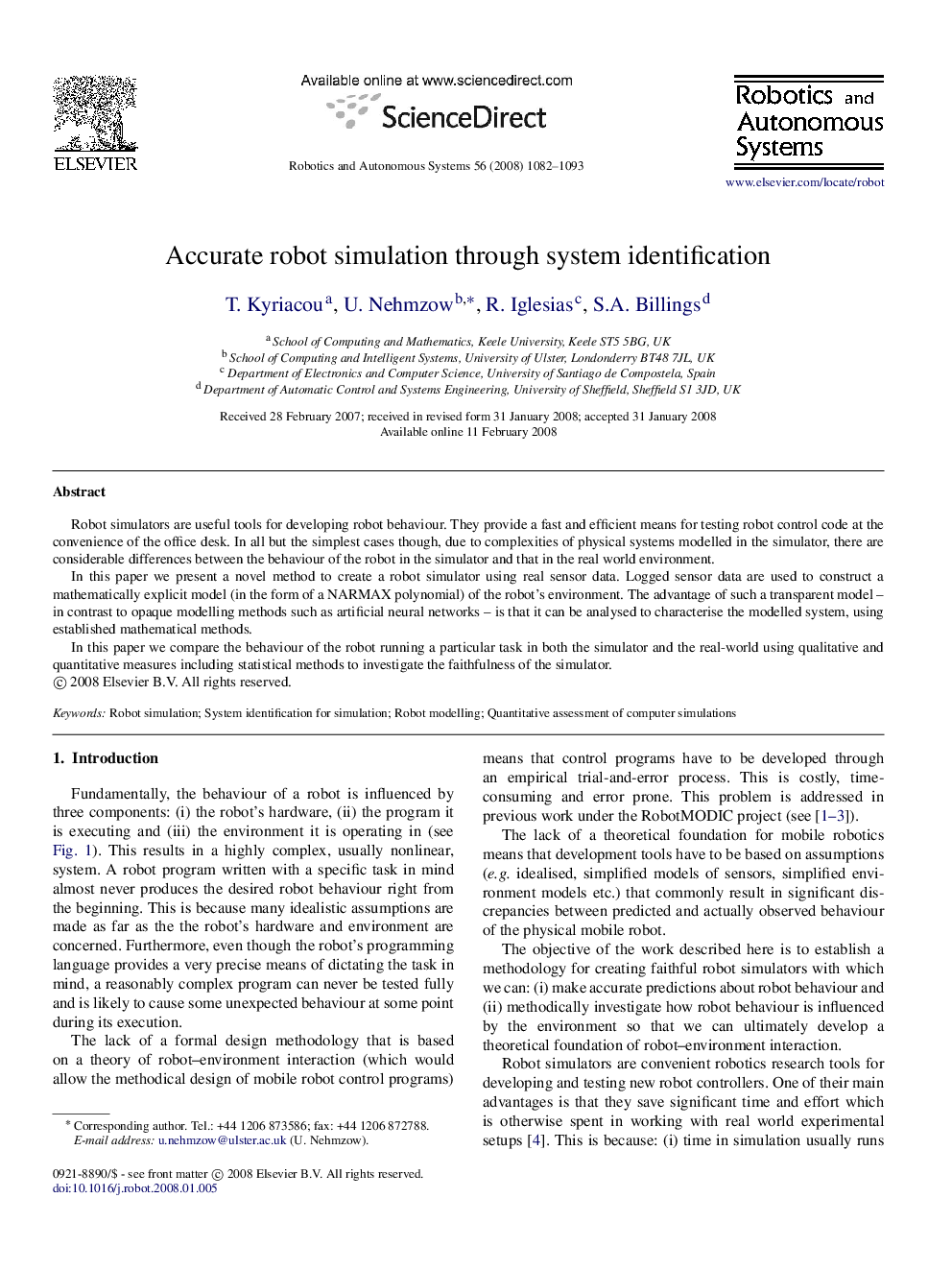| Article ID | Journal | Published Year | Pages | File Type |
|---|---|---|---|---|
| 412007 | Robotics and Autonomous Systems | 2008 | 12 Pages |
Robot simulators are useful tools for developing robot behaviour. They provide a fast and efficient means for testing robot control code at the convenience of the office desk. In all but the simplest cases though, due to complexities of physical systems modelled in the simulator, there are considerable differences between the behaviour of the robot in the simulator and that in the real world environment.In this paper we present a novel method to create a robot simulator using real sensor data. Logged sensor data are used to construct a mathematically explicit model (in the form of a NARMAX polynomial) of the robot’s environment. The advantage of such a transparent model –in contrast to opaque modelling methods such as artificial neural networks –is that it can be analysed to characterise the modelled system, using established mathematical methods.In this paper we compare the behaviour of the robot running a particular task in both the simulator and the real-world using qualitative and quantitative measures including statistical methods to investigate the faithfulness of the simulator.
